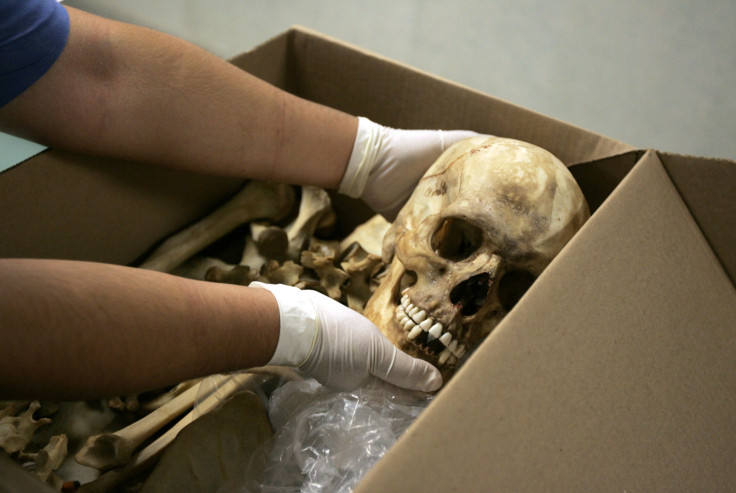Skeleton of Medieval 'Witch Girl' Found Buried Face Down in Italy

Archaeologists believe they have found the human remains of a 13-year-old girl positioned face down in her grave, suggesting a link with witchcraft.
The skeleton is called "the witch girl" by Italian media and was discovered in San Calocero in Albenga on the Ligurian Riviera.
The skeleton showed signs of porotic hyperostosis on the skull and orbits - which were the result of severe anaemia.
"She could have suffered from an inherited blood disorder such as thalassemia or from hemorrhagic conditions. More simply, it could have been an iron lacking diet," anthropologist Elena Dellù told Discovery News.
According to Caroline Arcini of Sweden's National Heritage Board, convicted witches and rule-breaking nuns were also buried in prone positions.
The Italian site is a burial ground on which a martyr church dedicated to San Calocero, was built in the fifth and sixth centuries AD. It was abandoned by 1593.
The archaeological dig was carried out by the Pontifical Institute of Christian Archaeology at the Vatican.
The facedown or prone burial, which has not yet been radiocarbondated, is believed to date back to the early Middle Ages. "These rare burials are explained as an act of punishment. What the dead had done was not accepted by the community," said Stefano Roascio, the excavation director told Discovery News.
"Like other deviant burials, in which the dead were buried with a brick in the mouth, nailed or staked to the ground, or even decapitated and dismembered, the facedown treatment aimed to humiliate the dead and impede the individual from rising from the grave.
"In particular, the prone burial was linked to the belief that the soul left the body through the mouth. Burying the dead facedown was a way to prevent the impure soul threatening the living," anthropologist Elena Dellù explained,
In extreme cases, a facedown burial was used as the ultimate punishment, with the victim interred alive.
Facedown burials may have been a custom used across societies to disrespect or humiliate the dead.
Lead study author Caroline Arcini of Sweden's National Heritage Board detected a common thread in the prone burials she studied: "That society sanctioned this apparently negative treatment of the dead," she told Current Archaeology.
The burials appear to signify "behaviour that is out of the norm—it is not accepted, what [the dead] have done," Arcini said.
Shaming the dead "is most probably a deep-rooted behaviour in humankind."
Some people had their hands and feet tied together, suggesting they had been criminals or prisoners of war.
The highest frequency of facedown burials in Sweden, for instance, dates to the period of the Viking age when Christianity arrived in the region, Arcini said.
Pagan Vikings may not have accepted those who converted to Christianity and may have buried the bodies in a way that reflected their dislike, she explained.
The earliest known case of prone burial, 26,000 years ago, was found in the Czech Republic.
© Copyright IBTimes 2025. All rights reserved.






















